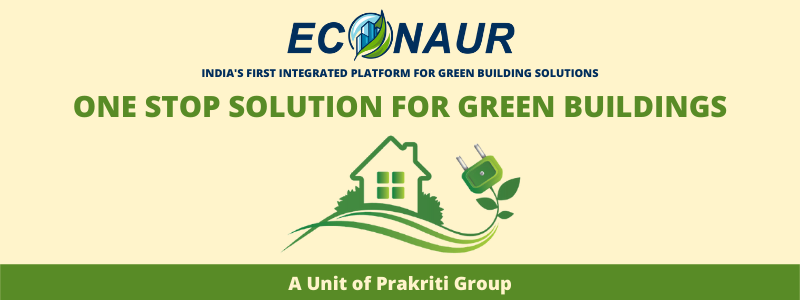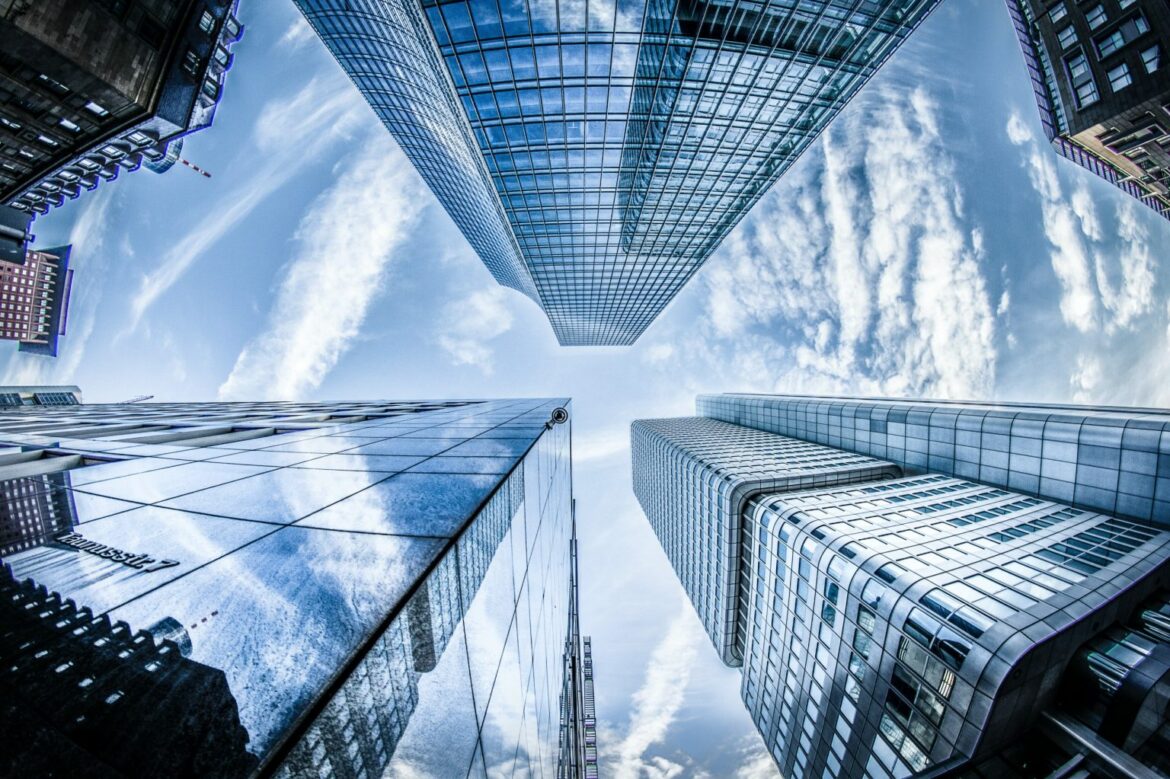The infrastructure Industry is the most Dynamic & Growing Industry in the world, but in the way it is growing that is very dangerous for our environment as it is responsible for various reasons like climate change, resource depletion, pollution, and peak oil. These issues are all accelerating rapidly, and all have strong links with the building industry.
The building industry is hugely dependent on cheap oil, from the manufacture and transportation of its materials to the machinery and tools used in demolition and construction. In the UK, it uses vast quantities of fossil fuels, accounting for over half of total carbon emissions that lead to climate change. The built environment is also responsible for significant amounts of air, soil and water pollution, and millions of tonnes of landfill waste. This is a situation that clearly needs to change.
Reducing Energy Consumption
With the inevitability of declining fossil fuels, and the threat of global climate change, reducing our energy consumption is an essential survival strategy. Choosing to build green saves energy. The low embodied energy of green products ensures that very little energy went into their manufacture and production, with a direct reduction in carbon emissions. Eco-friendly design methodology can further reduce energy consumption by minimising energy inputs for heating, cooling and light, and incorporating energy-efficient appliances. Saving energy for the occupant also saves money – an issue that will become increasingly important as the cost of fossil fuels inevitably rises in the near future.
Eco-friendly construction can not only help to create a better outdoor environment, it can also help to build a healthier indoor environment. Conventional building materials and methods have been linked to a wide range of health problems. Chemical pollutants from paints, solvents, plastics and composite timbers, along with biological pollutants such as dust mites and moulds are known to cause symptoms such as asthma, headaches, depression, eczema, palpitations and chronic fatigue syndrome. Green buildings eliminate these problems through good ventilation design, breathable walls, and the use of natural, non-toxic products and materials.

There are many good reasons why we should use eco-friendly construction methods and materials. It can improve the health of our planet, and the health of our own lives. It also supports local business and helps strengthen the local economy, which in turn helps to build our communities into vibrant, prosperous and desirable places to live.
Green building is not only a wise choice for our future; it is also a necessary choice. The construction industry must adopt eco-friendly practices and materials that reduce its impacts before we reach a point of irreversible damage to our life-supporting systems. The UK Government is beginning to recognize this urgency and is committed to integrating green specifications into building regulations and codes, but the process of developing policy is slow. The industry needs to take its own initiative and find alternative ways to build, using green, renewable energy resources, and adopt non-polluting practices and materials that reduce, recycle and reuse before it is too late.
1. Design of Building
Smaller buildings are generally more environmentally friendly and cheaper to run. Intelligent design means making the best use of space possible. It forces developers to start thinking creatively about space, and the future of infrastructure.
2. Consider The Placement Of Windows
Something as simple as the placement of windows can make a great deal of difference to the atmosphere of a room. Innovative technology for builders assists in identifying the most strategic window positions to take advantage of sunlight and natural breezes.
The problem with poorly sealed doors and windows is they let airflow in and out of the home. This means that your heating and cooling systems have to work harder to keep the house at a constant temperature, which wastes energy and costs you money.
With quality certified windows, you could save $126-$465 per year when replacing single-pane windows. When building a new house, choose quality doors and windows that won’t make your heating and cooling system work harder.
3. Design the Insulation for Building
Insulation is another thing to consider when building an eco-friendly property. Investing in proper insulation keeps the area cool in the hotter months, and warm during the winter, minimising the need to run heating and cooling units regularly. Conventional buildings use insulation materials that contain toxic chemicals such as petrochemicals and toxic adhesives. Sustainable construction presents a range of safe, natural and readily available materials. Some of these materials are more affordable than their commercial counterparts. These materials include sheep’s wool, which is an affordable and sustainable material that can be used as insulation. Others include recycled cotton, which can be sourced from shreds of discarded clothing, representing a sustainable and non-toxic insulation option. Wood fibre can also be used as it is made from wood chips, which are a by-product of the timber industry. The chips are fused together using natural adhesives.
4. COOL ROOF for the Building
In particularly North & South India, a building’s exposure to the sun can result in heat being trapped inside the roof, gradually warming up the interior of the building. Green roofs (Cool roofs)are an innovative solution to this problem. Heat-reducing methods such as using reflective roof paint, roof covering, tiles or planting grass will result in a cooler building, and save the energy and money it would otherwise take to cool it.
5. Assess Durability and Lifespan Of Foundations
Life expectancy in architecture and construction is growing in importance. Durable materials such as brick, stone, and concrete have a longer lifetime and are more eco-friendly during the demolition and disposal phase. Extensions, renovations, and refurbishments stretch the life of a building, especially when structures are built using durable materials.
6. Use Sustainable, Biodegradable, and Recyclable Materials Where Possible
Reusing old materials where possible is an easy way to save money and reduce the environmental impacts of your construction. Products like recycled lumber, plastic, and glass are less damaging than buying new ones. Biodegradable materials are also being produced with reduced energy costs and pollution.
7. Water Saving Methods
Conservation of water is a very important element of sustainable construction, be it residential, industrial or commercial. These strategies are often simple and can be implemented into any kind of construction project. Smart, eco-friendly techniques include rainwater collection systems for example. If collected and stored, recycled rainwater can be used for things like landscape irrigation. Additionally, water condensation from HVAC units can also be collected and used for similar reasons. Recycling water takes advantage of resources that are readily available, which would otherwise go down the drain.
Reducing water wastage is easily achieved by installing water fixtures to reduce the flow of toilets, showerheads and taps. Encourage clients to purchase eco-friendly products by calculating their future water savings.
8. Install Renewable Energy Sources in the Building
Solar power converts the sun’s radiation into energy. Installing solar panels may be expensive, but in the long run saves a lot of money and energy consumption. However, to take advantage of solar power, the location must be considered, as well as the positioning of solar panels. Estimating software assists in determining how much power can be collected and saved.
With soaring energy costs, investing in solar power presents a long-term sustainable solution. Not only will this be a cost-saving measure in the future, but solar power also reduces your grid reliance and lessens the strain on electricity providers. Solar power transforms roofs of homes and buildings into generators that help to keep power and electricity flowing. To take a step further, photovoltaic windows can with solar cells be used, creating window panels that adjust transparency and can help to control interior temperatures.
Another option for clean and renewable energy revolves around wind power. Turbine farms of all sizes can be used to help produce energy for any given building. These include vertical axis and helical wind turbines on rooftops which can reduce consumption. The greatest advantage of wind turbines is that they require little maintenance after it is installed. The interior of a building can also benefit from wind turbines, maintaining indoor air quality and reducing utility investments.
9. Locally Sourced Materials
Materials are sometimes transported over a long-distance and a lot of energy is used in the transportation phase. With green construction, emphasis is placed on the use of locally-sourced materials. This is meant to reduce the carbon footprint, and create a far more efficient construction process. Moreover, using materials that are available in any given city or town, construction companies can help support and grow local businesses.
Conclusion
The environmental benefits of eco-friendly construction are obvious. But there are other compelling reasons to implement green building practices that may not immediately come to mind. Examples:
- Healthier and happier workers: Employees that work in green buildings report fewer headaches as well as improvements in asthma and allergies
- Reduced energy costs
- Ability to attract and retain top talent
- Green buildings are generally able to sell for more money than standard buildings
- Additional business opportunities by appealing to the ever-growing pool of conscious consumers

Tags: eco friendly construction methods, how to make a green building, how to make a green building working model, insulation materials, renewable energy

